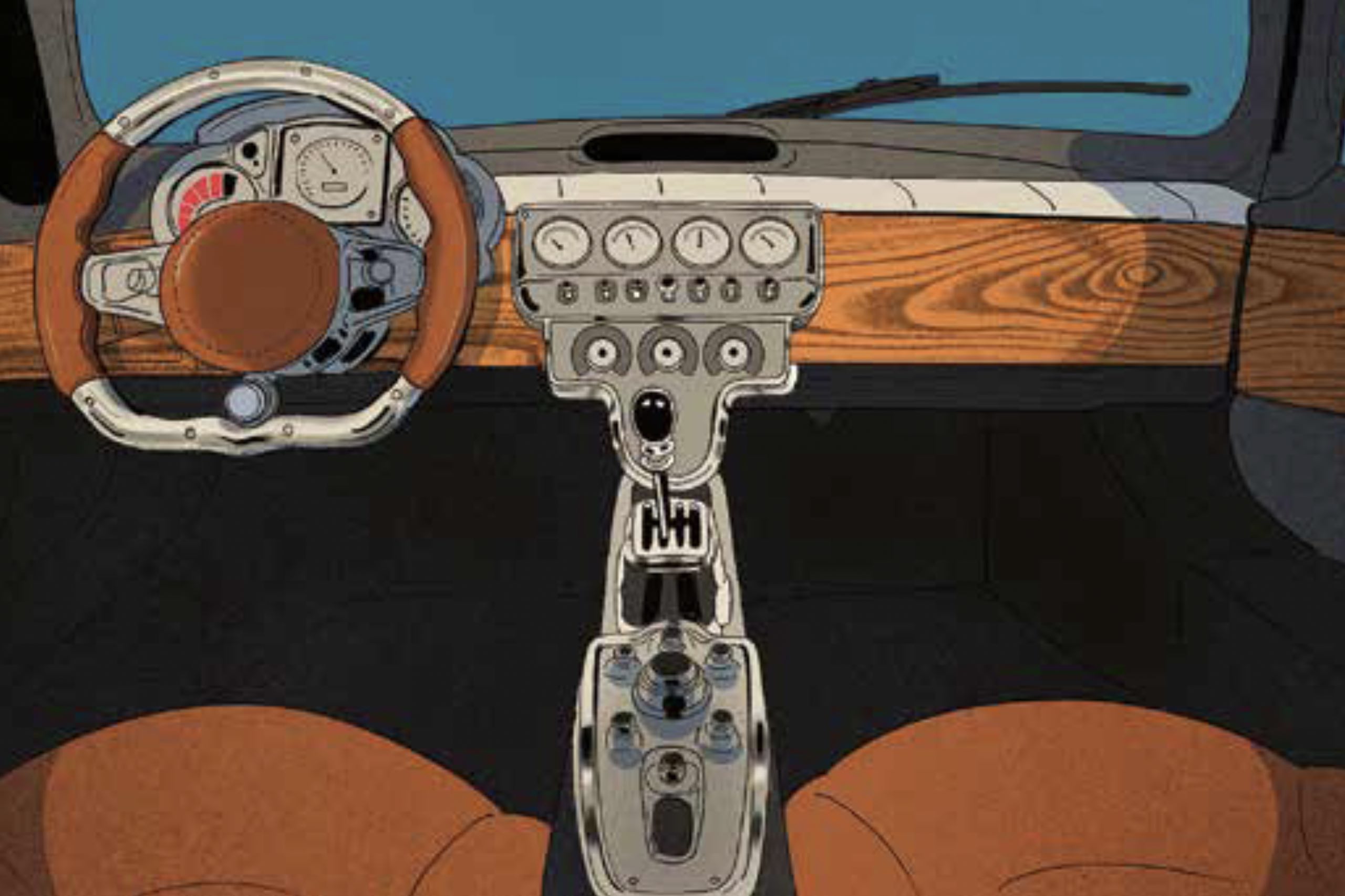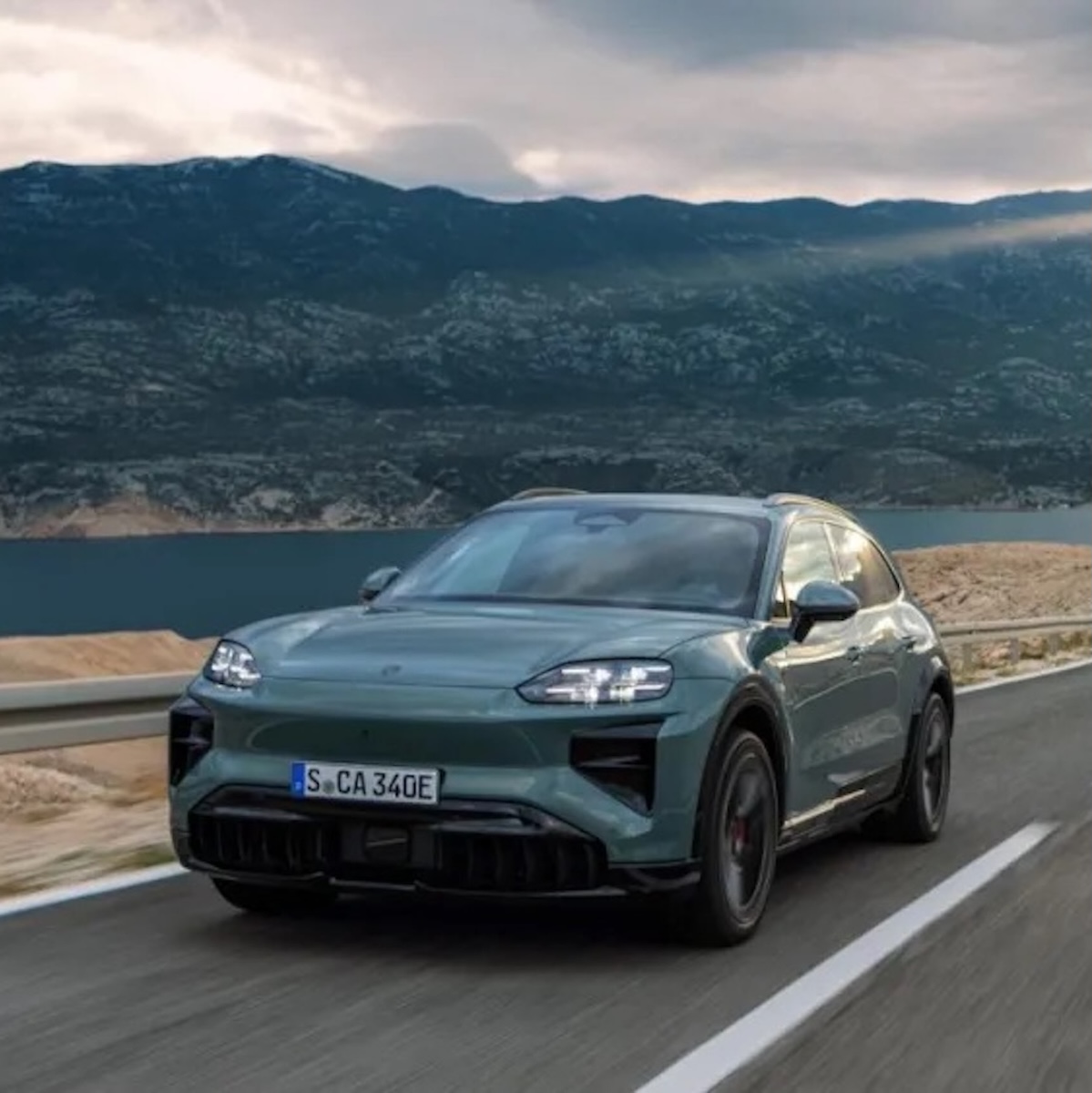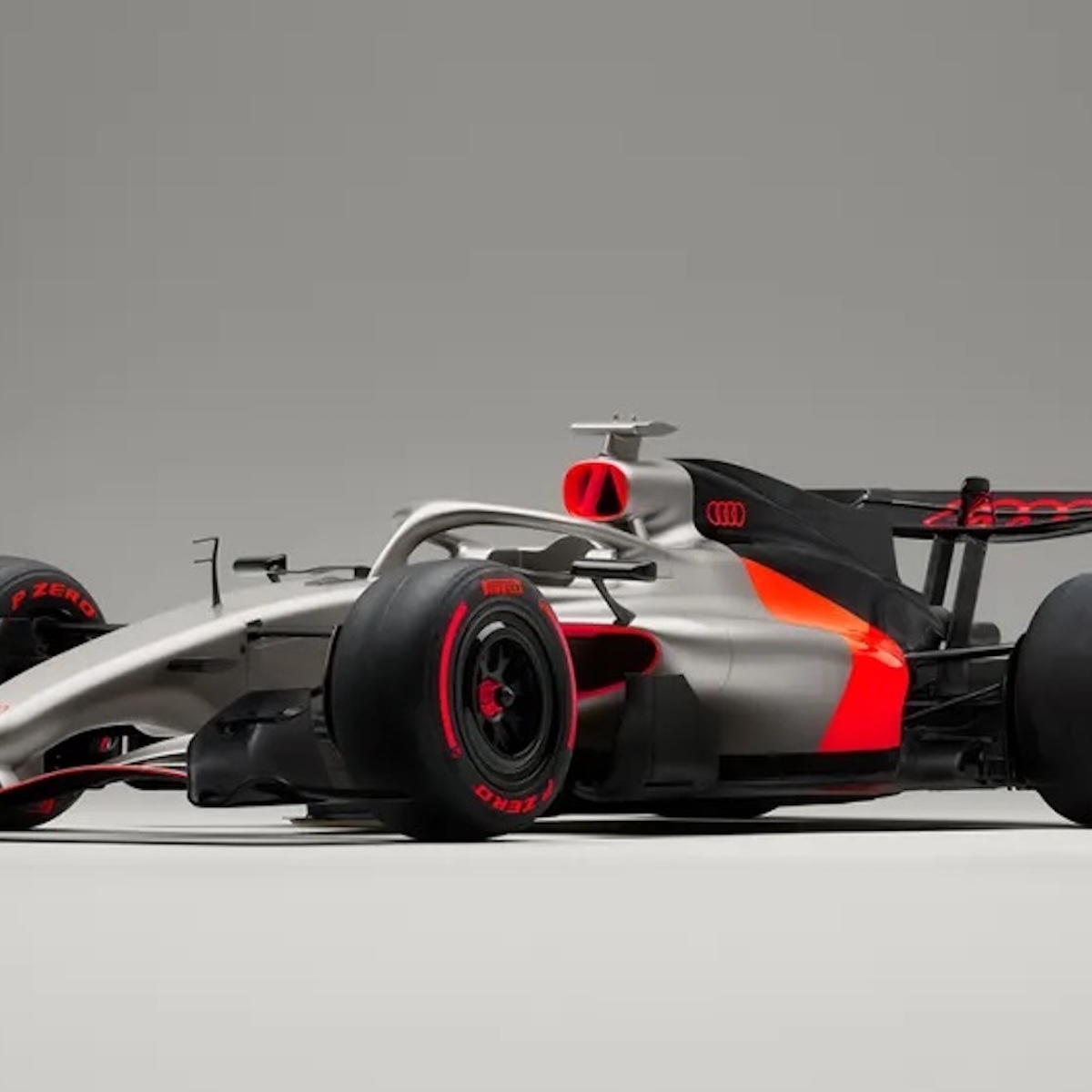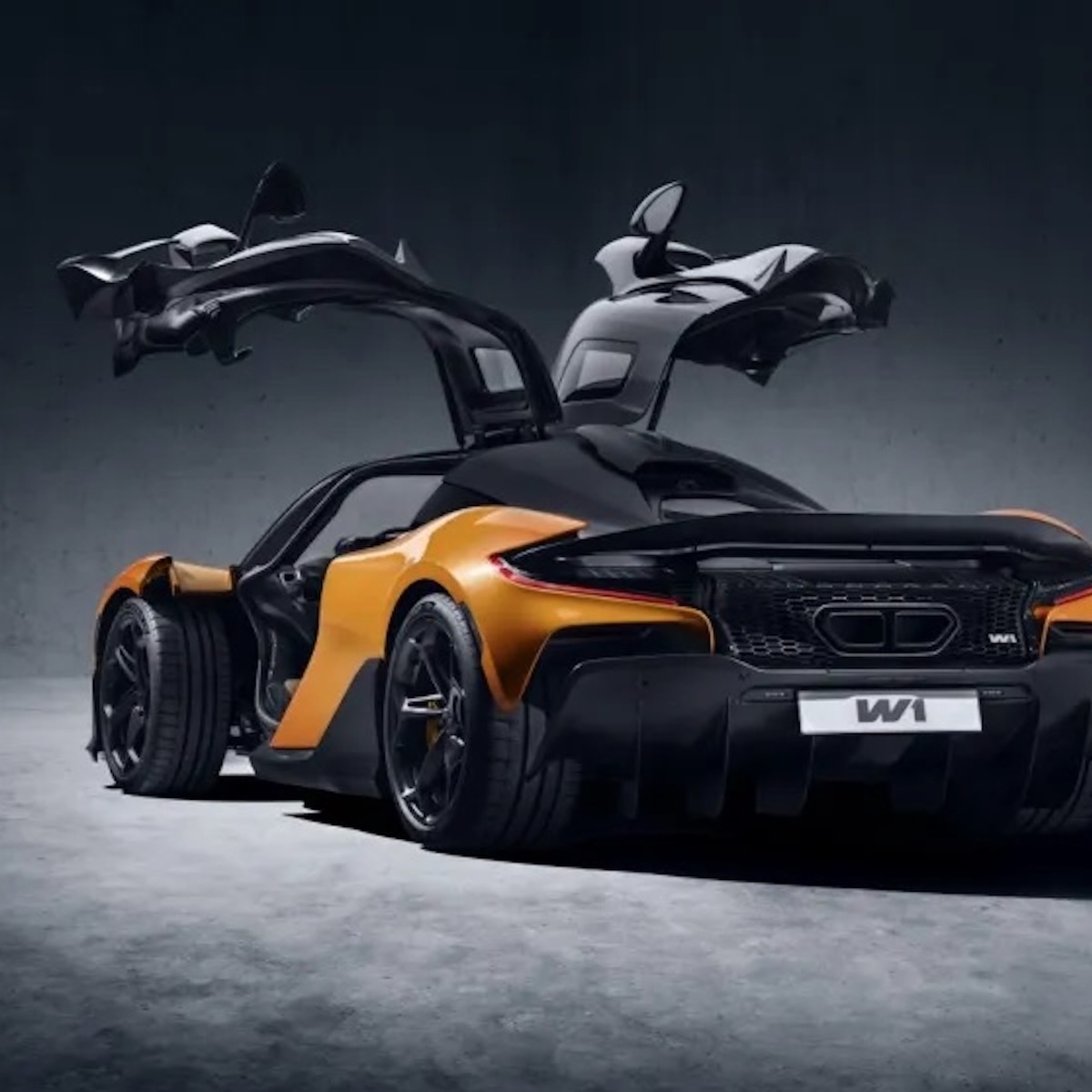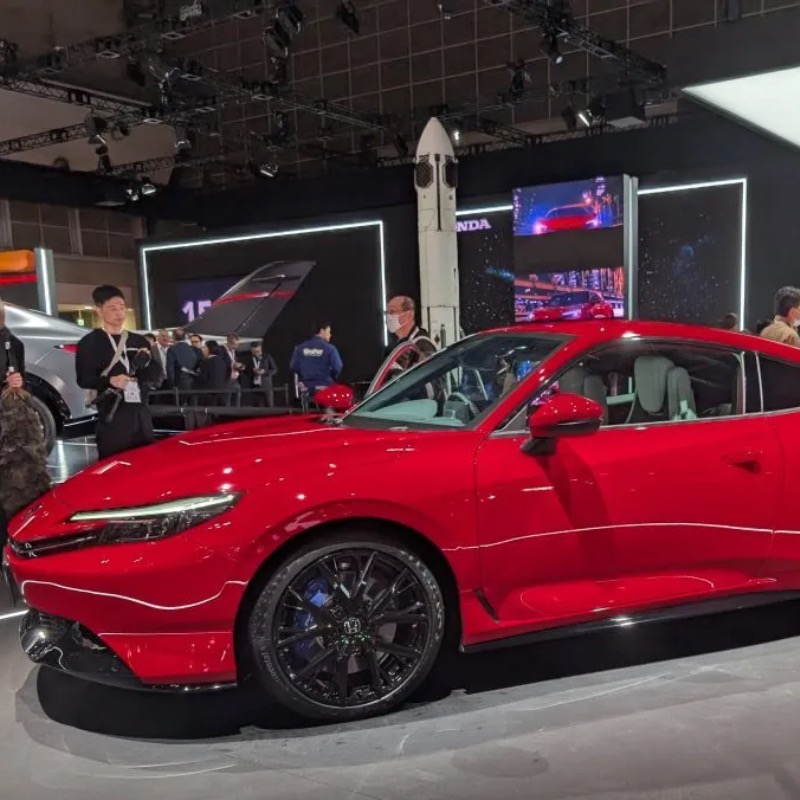By Viju Mathew, Robert Ross, Tim Pitt, Basem Wasef, and P. Ramakrishnan
Analogue For the Ages
While digital technology has introduced lavish advances in automotive comfort and convenience, it’s also impacting notions of exclusivity and collectibility. Nothing ages a vehicle faster, for example, than an outdated infotainment system. Such inevitable obsolescence and the looming era of silent, sterile EVs are why a few elite manufacturers and restorers are embracing an unapologetically analogue approach.
“The automotive world is going through a paradigm shift,” says Rob Dickinson, founder of Singer Vehicle Design, known for transformative restorations of the Porsche 911. “Electric power means that huge speed is relatively easy to accomplish, so it’s less of a differentiator. Perhaps there’s a renewed interest in analogue as a result—the emotional connection for an owner engaging with a big-hearted flat-six and a three-pedal manual transmission is a powerful one.”
The approximately US$2 million (HK$15.54 million) Pagani Utopia, our pick for Best Hypercar last year, not only has a traditional power train, with the 864 hp 12-cylinder engine mated to a manual gearbox, it also features meticulously crafted switchgear and gauges. “We like simple, lightweight cars focused on dynamics and not driven by the latest electronic devices,” says Christopher Pagani of his family’s boutique marque, adding that while “there’s always an evolution of our models, sometimes the evolution doesn’t include screens.”
Which is good news for owners looking to personalise the cockpit, as with one example’s Herm.s-commissioned interior. “Screen inflation dates the car like nothing else,” says Bugatti design director Frank Heyl. Referencing the French automaker’s 100-year-old Type 35, he notes that “these cars are still in collectors’ garages, they’re still being raced, so for any new car we now make, we have to keep the aspect of timelessness in mind.” Slow adoption (or no adoption) of software dependent trappings safeguards a brand’s legacy. Plus, in many ways, high-end markets have long preferred analogue.
“When the quartz watch came out, everyone thought it was the end of the mechanical watch,” Heyl notes, “but the opposite has been the case.” Along with certain new exotics, the classic-car market also attests to the enduring appeal of retro aesthetics. “Some of the oldest cars from the antique and brass eras are now attracting more and more younger collectors,” says David Gooding, co-founder of automotive auction house Gooding & Company. “Analogue cars encompass a whole visceral process that goes beyond the simple push of a button and the lighting-up of a screen, and that’s quite exciting for a lot of people.”
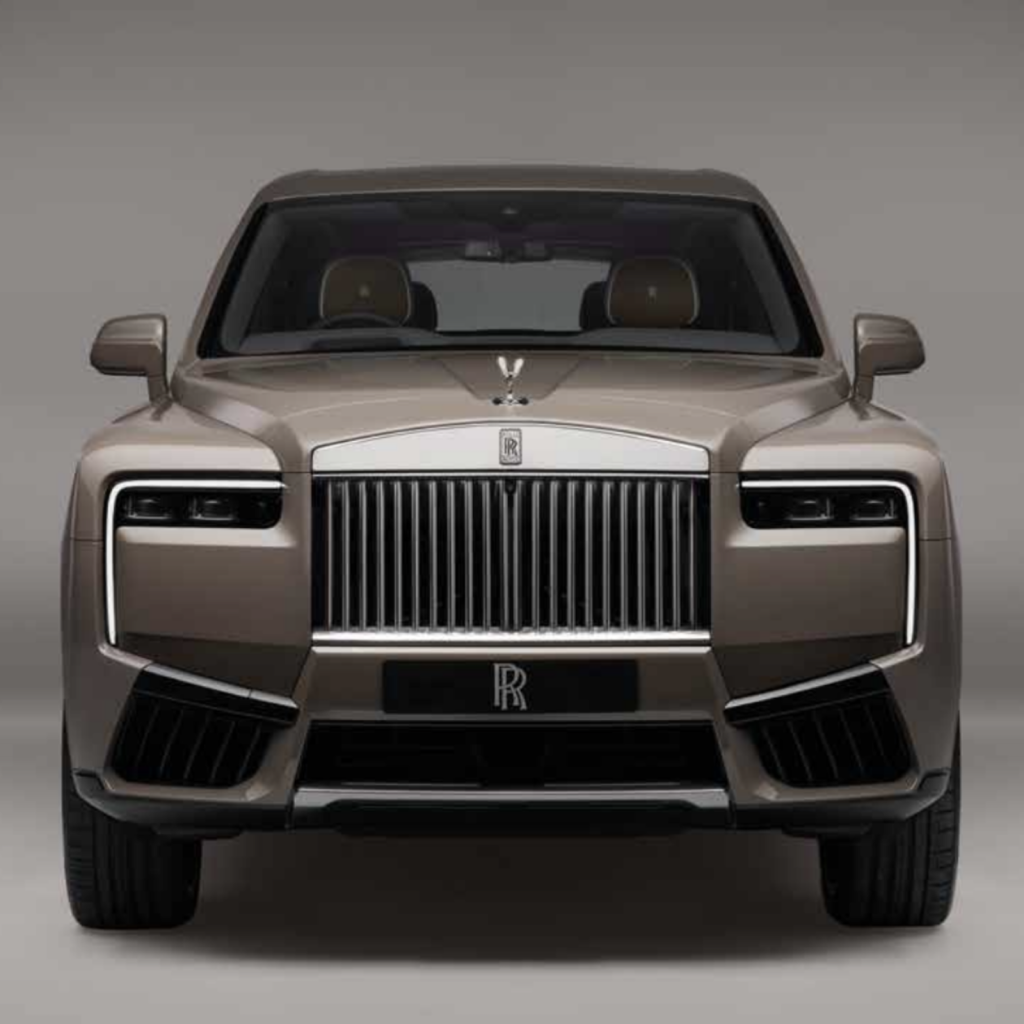
Super-Luxury SUV
Rolls-Royce
Cullinan Series II
Just in time for Christmas, Rolls-Royce Motor Cars Hong Kong celebrated the launch of the Cullinan Series II in a showroom event in the city. As the wheels were set in motion, luxury car enthusiasts gave it near-universal praise. Since its initial introduction in 2018, the Cullinan has redefined the super-luxury SUV segment, offering an unparalleled “magic carpet ride” experience across diverse terrains. Now, the Series II builds upon this legacy, integrating advanced technology and bespoke options while retaining the model’s timeless elegance.
The Cullinan’s appeal to a younger clientele has been noted by petrolheads, highlighting its genuine off-road capabilities and modern luxury. On the exterior, a striking vertical appearance, illuminated features, and larger 23-inch wheels set new design benchmarks, while the interior boasts a pillar-topillar glass fascia and a bespoke Spirit of Ecstasy clock cabinet. Enhanced connectivity allows passengers to enjoy a premium infotainment experience with independent streaming options.
Rolls-Royce’s Cullinan Series II exemplifies the marque’s enduring commitment to craftsmanship and innovation, catering to discerning clients who seek both opulence and adventure. With the introduction of this evolved model, a new chapter in Rolls-Royce’s storied legacy is written, appealing to a new generation of luxury SUV enthusiasts.
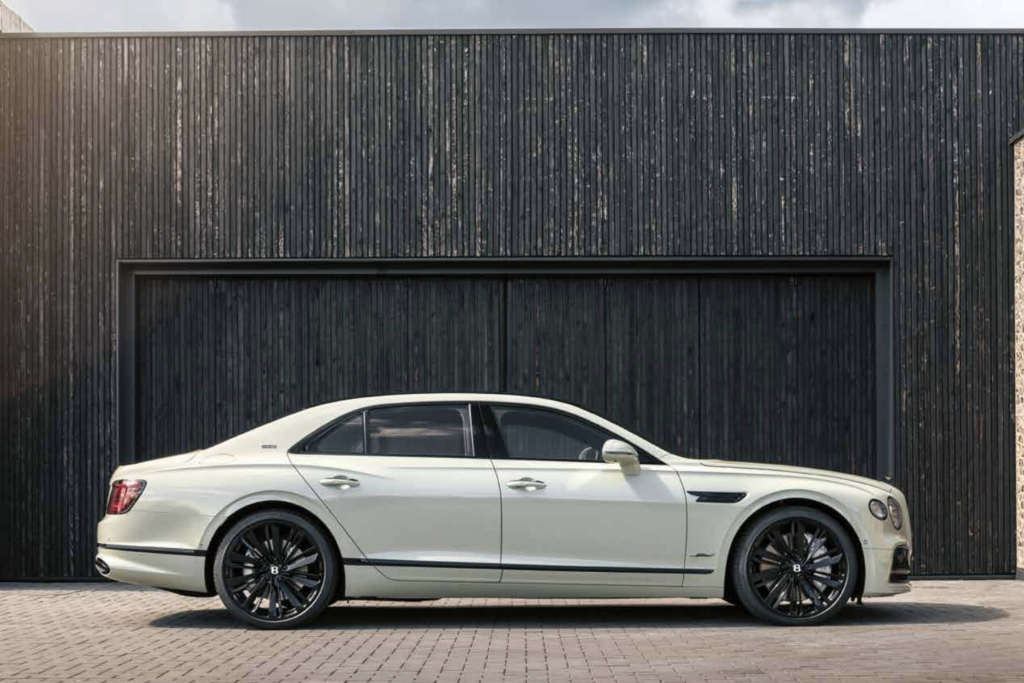
Sedan
Bentley
Flying Spur Speed
Don’t call it a comeback yet, but the sedan is entering a new age of exclusivity and performance, and leading the charge is the Bentley Flying Spur Speed. The 626 hp four-door is expected to be among the last in the 106-year-old automaker’s lineup to be powered solely by a 12-cylinder engine—a power plant Bentley stopped producing last summer. Yet nostalgia isn’t why it tops this category for us.
That would be the car’s combination of athleticism and finish. The Flying Spur Speed hustles from zero to 60 mph in 3.7 seconds—quicker than the all-electric Rolls-Royce Spectre—and with a top speed of 207 mph, it can leave a 671 hp McLaren Artura in the rearview. The car’s dynamic all-wheeldrive system and all-wheel steering add grip and agility that belie the 5,373-pound curb weight, while the 48-volt Dynamic Ride setup adjusts stiffness in the turns; it’s shockingly nimble for such a stately four-door, even on track. The cabin, as expected, is defined by Bentley’s attention to visual and tactile delight, including such options as exotic-wood veneers, knurled switchgear, and 3-D diamond quilted leather. While this benchmark sedan may represent the end of the marque’s unassisted 12-cylinder era, there’s nothing bygone about it.
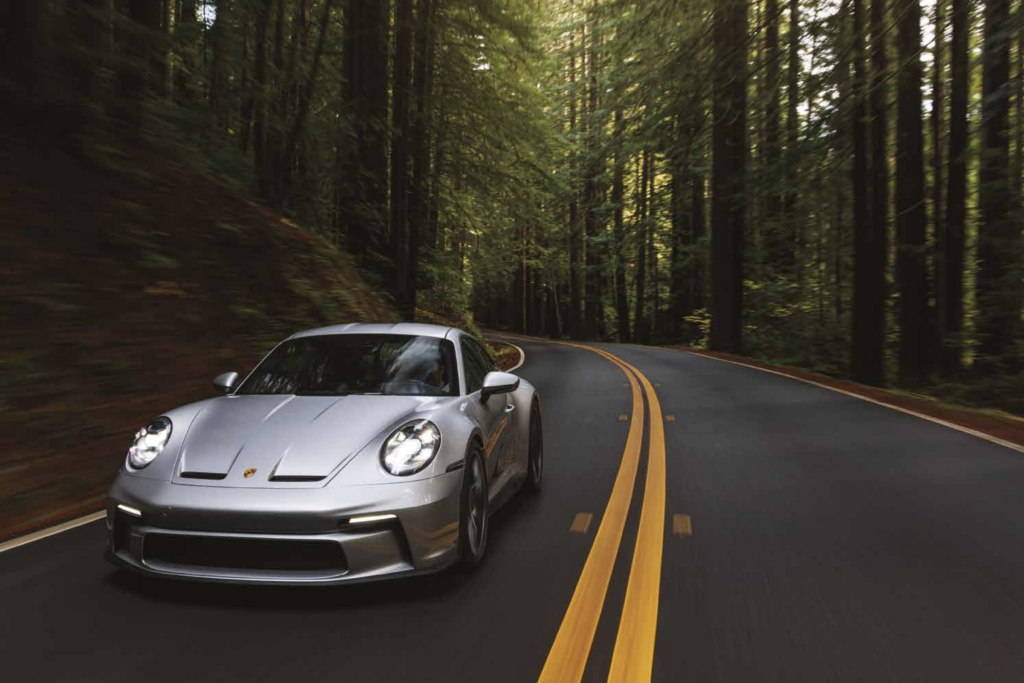
Sports Car
Porsche
911 S/T
The Porsche 911 S/T is a limited production that tip to the model’s 60th anniversary—but rather than embody the German marque’s vision for its flagship car moving forward, this variant strips away features and technology to recall the spartan spirit of early race-going 911s. In the interest of trimming fat, likeable hallmarks such as rear-axle steering and a hydraulic clutch are gone; the obsessive retuning results in a drive experience that’s raw, unfiltered, and utterly engaging.
The S/T’s rough edges—among them a tambourine-like rattle at idle, akin to the soundtrack of a classic Ducati’s dry clutch—will disconcert the uninitiated, and the steering is so communicative that the wheel dances in hand. The overall result isn’t for everyone, but the unabashed violence of the 518 hp flat-six engine, the shortened (manual-only) gear ratios, and the sharpness with which this lightest-available 911 slices and dices corners are why the 911 S/T has landed on this list. Don’t let anger at the inevitable dealer markups taint the engineering achievement: As a rolling ode to oldschool motoring, sports cars don’t get better than this.
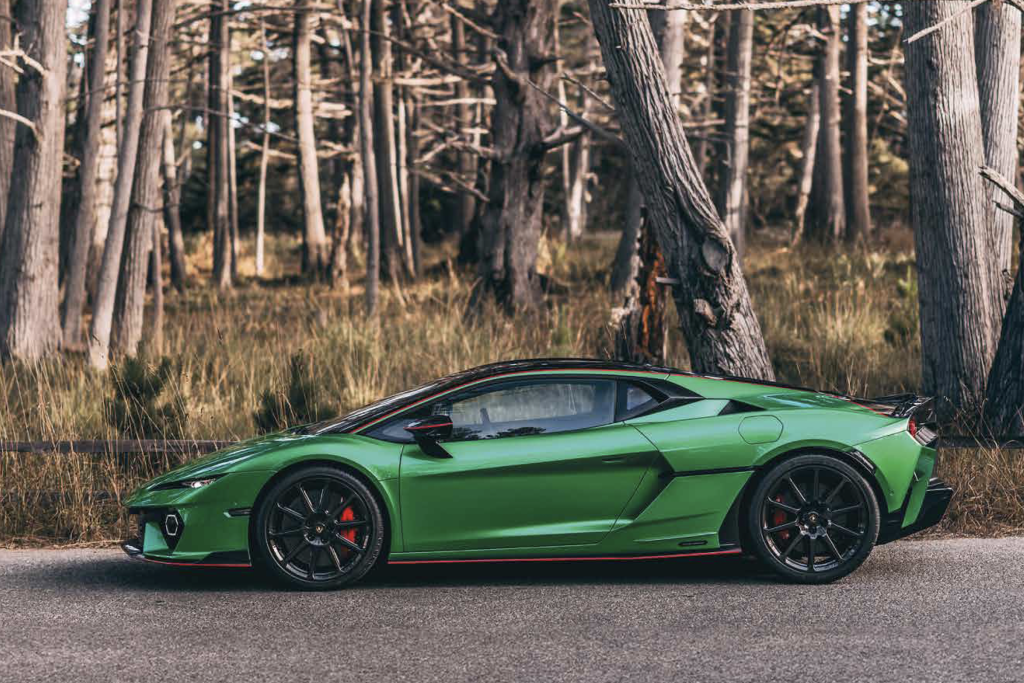
Hybrid
Lamborghini
Temerario
At the prestigious Monterey Car Week 2024, Automobili Lamborghini introduced the formidable Temerario, a hybrid V8 supercar that redefines performance and comfort. Marking a significant shift for the brand, this sleek model is the second in the Lamborghini High Performance Electrified Vehicle (HPEV) series, featuring razor-thin headlights and hexagonal design elements, along with a dynamic rear end complete with a wide diffuser. Named after a legendary fighting bull, as is the tradition of the marque, the Temerario retains iconic Lamborghini DNA with its aggressive wedge shape, reminiscent of the classic Countach. Its design highlights sharp lines and an aerodynamic silhouette, underscored by a striking light signature.
Inside, the cabin offers more space and comfort, with high-quality textiles and advanced digital information centres that enhance the driving experience, reinforced by three high-tech screens and luxurious materials like carbon fibre and leather. Powering the Temerario is a 4.0-litre V8 twin-turbo engine combined with an electric motor, delivering an impressive 907 hp and a zero-to-60 mph time of just 2.7 seconds, encapsulating the Lamborghini commitment to innovative engineering. With the introduction of the Temerario, the Raging Bull not only enhances its legacy of performance but also embraces sustainability, paving the way for a hybridised future.
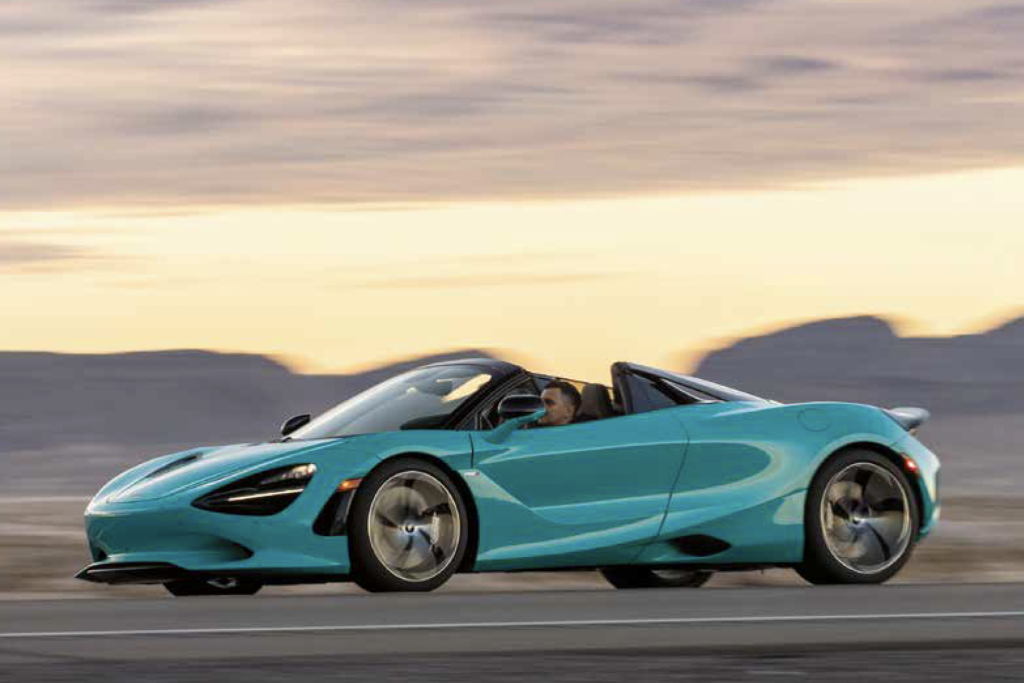
Convertible
McLaren
750S Spider
The soundtrack of the McLaren 750S Spider’s revamped, mid-mounted V-8 engine alone will make you want to drop the top even on overcast days Engineers worked hard on a new, lighter exhaust that’s tuned to howl, scream, and snort—it would be a shame not to soak it in at full volume. After all, this is the most powerful production-series model yet from McLaren, with 740 hp and 590 ft lbs of torque. That output sends the 2,923-pound (dry weight) coup. from zero to 60 mph in 2.7 seconds and to a top speed of 206 mph.
Also noteworthy are the front-end styling and cockpit design that won’t appear dated on future concours lawns (though we’re less enamoured with the rear-fascia adjustments). But it’s the sensation behind the wheel that never gets old. With ignition cuts on downshifts delivering startling cracks and engine mounts tweaked to deliver a punch between the shoulder blades, the drive experience makes the model variant what every child envisions a roadster to be: exhilarating, evocative, and viscerally engaging.

Hypercar
Gordon Murray Automative
T.50s Niki Lauda
These days, the differentiation between “supercar” and “hypercar” is increasingly subjective and not just a matter of power. Consider that entrants in the top-tier FIA World Endurance Championship Hypercar class are limited to a total output (engine and hybrid system combined) of 670 hp; it just goes to show that while muscle is one thing, power-to-weight is what puts the “hyper” in hypercar—and what edged Gordon Murray Automotive’s T.50s Niki Lauda to the head of this year’s class. Named in honour of designer Gordon Murray’s close friend, former Formula 1 colleague, and three-time Formula 1 World Drivers’ champion, the 761 hp track-only tour de force (limited to 25 examples) tips the scales with a dry weight of less than 1,985 pounds.
This gives the aluminium-and-carbon-fibre two-seater—its cockpit configuration mimics the Murray-designed McLaren F1 GTR race car—a power-to-weight ratio that bests such models as the original 1,500 hp Bugatti Chiron. Factor in the 3.9-litre Cosworth GMA V-12 engine revving to 12,100 rpm and the 2,645 pounds of downforce, and the T.50s makes a compelling argument that the legendary F1 wasn’t Murray’s magnum opus after all.

Coupé
Aston Martin
Vantage
Aston Martin proudly unveiled its newly optimised Vantage, a front-engine, rearwheel-drive sports car that epitomises the marque’s commitment to exhilarating performance. Powered by a reworked 4.0-litre V8 twin-turbo engine, the Vantage delivers an impressive 656 hp and 800 Nm of torque, achieving a top speed of 202 mph and zero to 60 mph in just 3.4 seconds—that’s 30 per cent more power and 15 per cent more torque than the previous model. A perfect 50:50 weight distribution, bonded aluminium structure, improved suspension, and advanced technologies, including Bilstein DTX adaptive dampers and an electronic rear differential, help with enhancing driver engagement and control. Newly designed interiors also combine automotive luxury with state-ofthe-art infotainment systems.
As part of Aston Martin’s collection of next-generation sports cars, the Vantage showcases the marque’s legacy of precision and dynamic, high-performance driving. Aston Martin’s mid-life refresh of the Vantage outshines outgoing models, boasting a reimagined design influenced by the One-77 and enhanced architecture.
Let’s not forget that Robb Report’s 2024 Car of the Year was the Aston Martin DB12. As this latest set of wheels rolls out of the workshop, perhaps this could be considered a suitable contender for 2025 as well. Only time will tell.
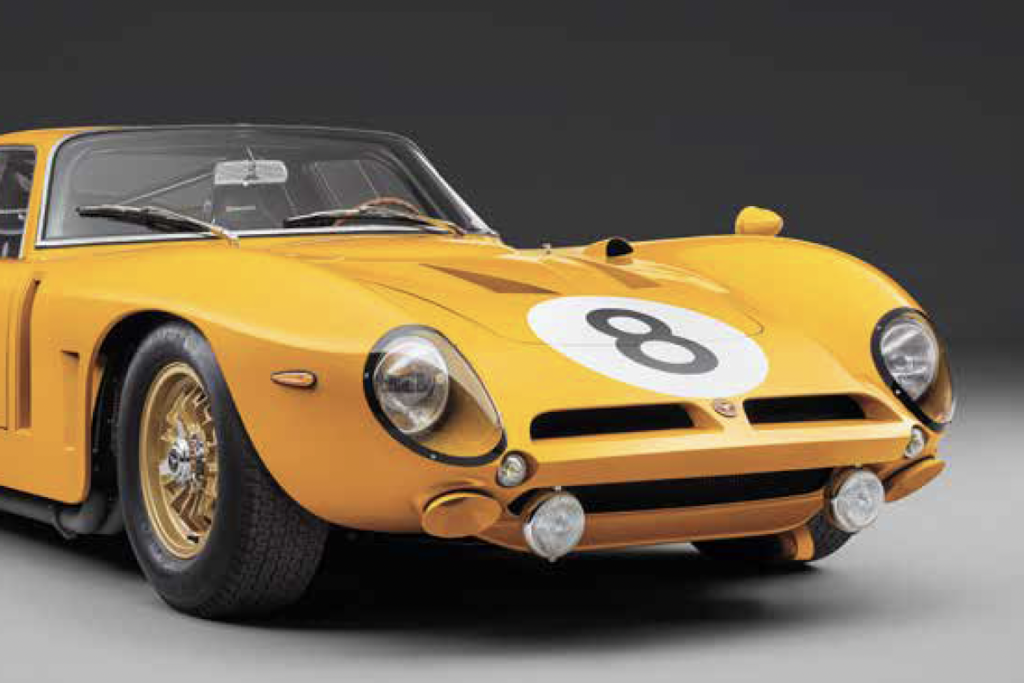
Continuation Car
Bizzarrini
5300 GT Corsa Revival
Fast, beautiful, and rare, the Bizzarrini 5300 GT was one of the most promising Italian sports cars of its day. With Strada (street) and Corsa (race) variants totalling only 133 examples made through 1969, it hardly had the production span to prove engineer Giotto Bizzarrini’s vision. Founded in 1964, his namesake marque developed a coup. to dominate the track, which it did by taking first place in its class at Le Mans in 1965. Using a front-mid-mounted Chevrolet small-block V-8 engine—the motor had a displacement of roughly 5,300 cc, hence the “5300” designation—the model applied lessons learnt from the Ferrari 250 GTO, another Bizzarrini design: “I started with the idea of the Ferrari GTO and set about trying to improve on it,” he said.
Those seeking a modern race version will want one of the 24 exacting copies produced by the resurrected Bizzarrini brand. Louder than a cement mixer and no more civilised, the contemporary 5300 GT Corsa Revival delivers a track-only experience identical to the original. For historic racers longing to travel back in time, here is your machine.

Interior
Bentley
Batur
Former Bentley boss Adrian Hallmark—now CEO at Aston Martin—pioneered the automaker’s so-called industrialisation of personalisation, which now translates to approximately 40 per cent of Bentleys leaving the factory with bespoke options from the Mulliner coachbuilding division.
The 740 hp Bentley Batur, based on the Continental GT Speed, takes this customisation to the next level, as each of the 18 examples is unique to its owner’s specifications. Inside, there’s a pleasing moratorium on plastic, with controls such as the air-vent organ stops and drive-mode dial available in titanium or 3-D-printed 18-carat gold. Also optional: a 20-speaker Naim audio system, one of the best we’ve heard in a production car.
The Batur flexes on sustainable materials, too. Its sculpted bucket seats can be hand-trimmed in low-carbon leather from Scotland or a leather-like material made from the husks of coffee beans. A flax-based composite for the dashboard veneer can also be requested, as can deep-pile carpets derived from recycled yarn. The two-seater even offers tailored luggage occupying a shelf that replaces the Continental’s rear seats—though just spending time in this enclave may be all the escape required.





